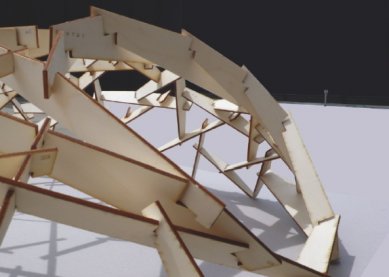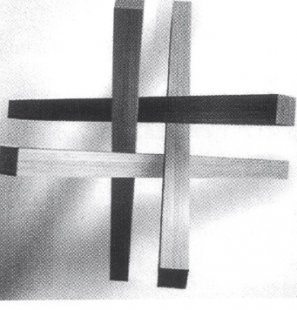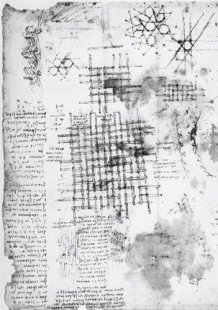
Research project of the Annette Spiro Institute at ETH Zurich
Source
Lehrstuhls von Annette Spiro für Architektur und Konstruktion an der ETH Zürich
Lehrstuhls von Annette Spiro für Architektur und Konstruktion an der ETH Zürich
Publisher
Petr Šmídek
24.09.2011 15:45
Petr Šmídek
24.09.2011 15:45
Annette Spiro
At the Institute of Architecture of ETH Zurich, an experimental project of a lever system utilizing digital methods and the irregularities of its irregularities contributing to static optimization was created under the guidance of Annette Spiro. The starting point of the entire research was an ancient construction system that Leonardo da Vinci had already explored. The department led by Annette Spiro also sought to take into account old craft skills, design methods, production, and the use of traditional materials. Initially, it was about the assembly method, where relatively large spans can be bridged using short wooden elements. This technology was originally used in times of wood scarcity or due to limited transport or assembly possibilities. Currently, similar principles are approached for ecological reasons, utilizing local resources or simple and inexpensive construction without the need for machinery. The main part of the research on rod structures focused on the very essence of the individual elements mutually supported at their center. With the proper use of ordinary rods, an extensive bearing structure can be created, the complexity of which has only been achieved in a few buildings so far. With newly developed digital tools, the aforementioned properties of the structure could be re-tested at ETH and adapted to irregularly shaped objects. New methods also expand the field of possibilities and increase the potential uses of the construction. The subsequent method of computer-controlled processing of elements allows for machine production. Currently, the conversion of the computer model into real scale is underway.
More information >
More information >
The English translation is powered by AI tool. Switch to Czech to view the original text source.




0 comments
add comment












